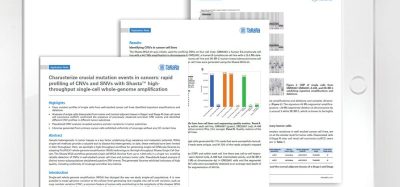Understanding the genetic origins of disease variation
Posted: 4 December 2023 | Drug Target Review | No comments yet
Researchers, using high-resolution mapping and mathematical modelling, have found mechanisms controlling mutation-driven diseases.


Researchers at the Hebrew University-Hadassah Medical School have discovered mechanisms controlling the activation and suppression of mutation-driven disease genes, particularly in cases like glioblastoma. This may revolutionise disease research and clinical applications, advancing personalised medicine, diagnostic biomarkers, and patient care.
Currently, 98 percent of individuals hospitalised for genetic diseases face insufficiently understood disease mechanisms, as these diseases often manifest differently between patients. Professor Asaf Hellman and his research team aimed to investigate the possible involvement of gene transcriptional variation in this phenomenon. They generated a DNA methylation-oriented, driver-gene-wide dataset of positive and negative regulatory elements in human glioblastomas, thoroughly analysing their effects on inter-patient gene expression variation.
Methylation-directed regulation revealed the interplay between enhancers and silencers in gene regulatory domains, influenced by DNA methylation. This offered key insights into the dynamic control of gene expression. Also, the high-resolution mapping of DNA methylation’s influence on gene expression within intact genomes enabled the scientists to understand how genes may be modified. This knowledge is crucial for solving the complexities of genetic diseases.
Biomarkers aren’t just supporting drug discovery – they’re driving it
FREE market report
From smarter trials to faster insights, this report unpacks the science, strategy and real-world impact behind the next generation of precision therapies.
What you’ll unlock:
- How biomarkers are guiding dose selection and early efficacy decisions in complex trials
- Why multi-omics, liquid biopsy and digital tools are redefining the discovery process
- What makes lab data regulatory-ready and why alignment matters from day one
Explore how biomarkers are shaping early drug development
Access the full report – it’s free!
The researchers utilised mathematical modelling to find key methylation sites driving gene expression variations, which allows for the exploration of epigenetics shaping disease progression. Observing methylation in glioblastoma patients’ gene expression profiles permits more accurate diagnostics and targeted therapies.
This research represents an important leap forward in genomics, offering insights for monitoring and comprehending the underlying factors contributing to the many outcomes observed in genetic mutation-driven diseases. DNA methylation has an important role in deciding how genes are used, which helps the understanding of why different people may have varying levels of gene activity. Dr Hellman explained: “The research unveils the existence of complex cis-regulatory networks that determine gene expression by combining the effects of positive and negative transcriptional inputs.”
This study was published in Genome Biology.
Related conditions
Glioblastoma
Related organisations
Hebrew University-Hadassah Medical School







